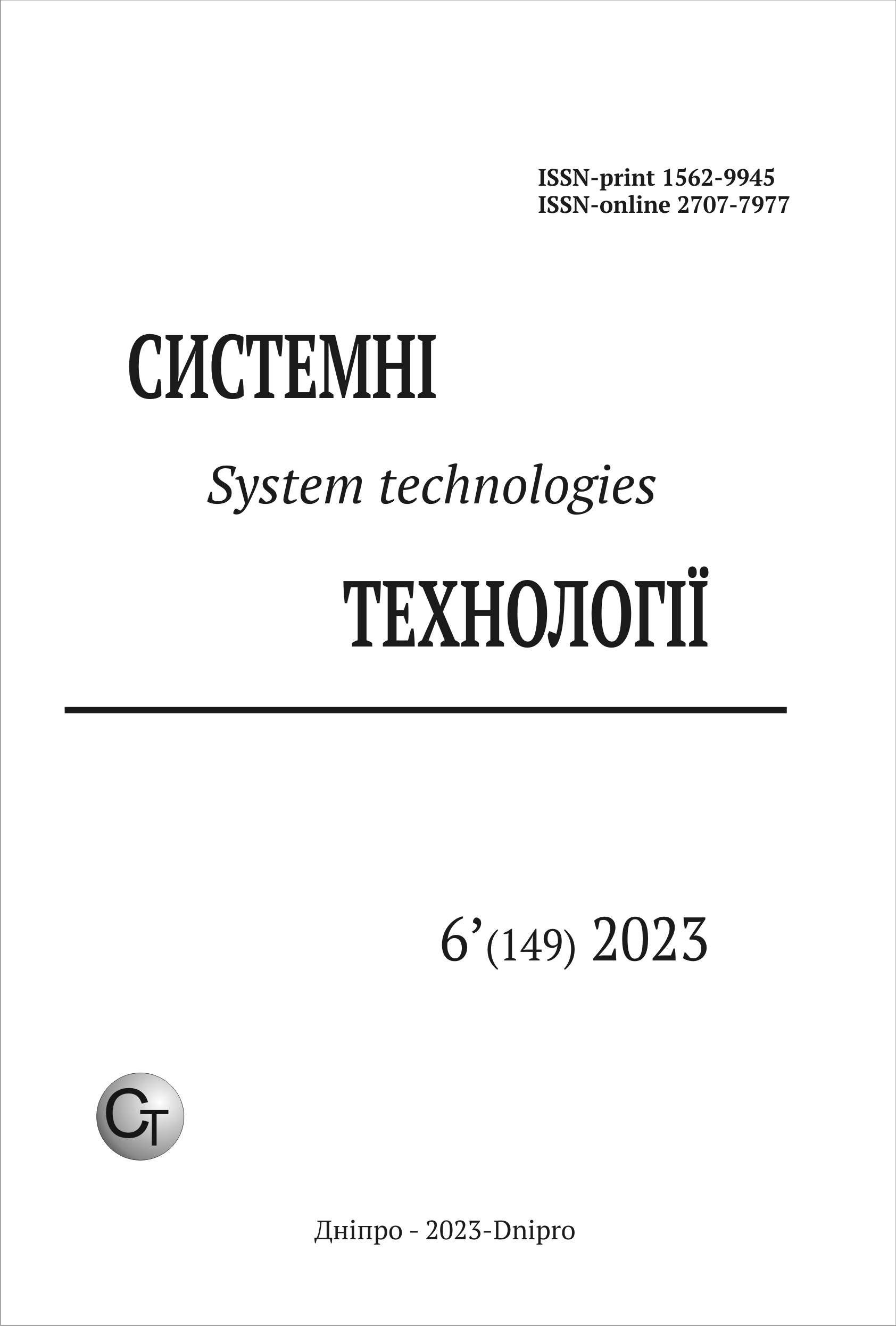АНАЛІЗ МЕТОДИК ОЦІНКИ СТУПЕНЮ ЗАБРУДНЕНОСТІ ВОДНИХ ОБ’ЄКТІВ
DOI:
https://doi.org/10.34185/1562-9945-6-149-2023-08Ключові слова:
водні об’єкти, водойми, супутниковий моніторинг, оцінка стану забруднення, екологічне навантаження, методи ДЗЗ, машинне навчання, валідація, Landsat 8.Анотація
В статті розглянуті основні методи моніторингу водних об’єктів їх стану забруднення та оцінка якості води. Загальноприйняті, стандартизовані методи оцінювання якості води в водних об’єктів, включають в себе наземний набір зняття проб, що в певних умовах не відповідає оперативності та є дороговартісним. Розвиток сучасних інформаційних технологій дозволяє використовувати різноманітні інструменти та набори даних, які застосовуються при проведенні супутникового моніторинг із певною періодичністю. Наявність архівних даних відкриває можливість порівнювати отримані результати та аналізувати чинники впливу на стан водних об’єктів. В роботі описано основні методи та набори даних, які можна використову-вати для застосування методів дистанційного моніторингу на основі машинного нав-чання. Проаналізовано приклади застосування дистанційного підходу щодо оцінки ступеню забрудненості водних об’єктів на великих територіях .
Посилання
Breus D.S., Levchenko M.V. Metody otsiniuvannia ta normuvannia yakosti pryrodnykh vodnykh resursiv Tavriiskyi naukovyi visnyk Vypusk № 110. Tom 2 , 2019 r. Str.126-131.
Berka C. Relationships between agricultural land use and surface water quality using a GIS. Sumas River watershed, Abbotsford, B.C.MSc thesis, Resource Management and Environ-mental Studies, University of British Columbia, Vancouver, B.C., 1996. 174 p.
EPA: 1996, Environmental Indicators of Water Quality in the United States. USEPA Rep. 841-R-96-002. U.S. Environmental Protection Agency, Office of Water, Washington, D.C.
EU Water Framework Directive 2000/60/EC. Official Journal of the European Communi-ties, 22.12 2000. L 327/1. 118 p.
Brooks, B.W., Lazorchak, J.M., Howard, M.D., Johnson, M.V.V., Morton, S.L., Perkins, D.A., Reavie, E.D., Scott, G.I., Smith, S.A., Steevens, J.A. Are harmful algal blooms becom-ing the greatest inland water quality threat to public health and aquatic ecosystems, Environ. Toxicol. Chem. 2016, 35, 6–13.
Arabi, B., Salama, M.S., Pitarch, J., Verhoef, W. Integration of in-situ and multi-sensor satellite observations for long-term water quality monitoring in coastal areas. Remote Sens. Environ. 2020, 239, 111632.
Najah Ahmed, A., Binti Othman, F., Abdulmohsin Afan, H., Khaleel Ibrahim, R., Ming Fai, C., Shabbir Hossain, M., Ehteram, M., Elshafie, A. Machine learning methods for better water quality prediction. J. Hydrol. 2019, 578, 124084.
Wang, P., Yao, J., Wang, G., Hao, F., Shrestha, S., Xue, B., Xie, G., Peng, Y. Exploring the application of artificial intelligence technology for identification of water pollution character-istics and tracing the source of water quality pollutants. Sci. Total Environ. 2019, 693, 133440.
Sagan, V., Peterson, K.T., Maimaitijiang, M., Sidike, P., Sloan, J., Greeling, B.A., Maa-louf, S., Adams, C. Monitoring inland water quality using remote sensing: Potential and limi-tations of spectral indices, bio-optical simulations, machine learning, and cloud computing. Earth-Sci. Rev. 2020, 205, 103187.
Peterson, K.T., Sagan, V., Sloan, J.J. Deep learning-based water quality estimation and anomaly detection using Landsat-8/Sentinel-2 virtual constellation and cloud computing. GIScience Remote Sens. 2020, 57, 510–525.
Wang, J.-H., Li, C., Xu, Y.-P., Li, S.-Y., Du, J.-S., Han, Y.-P., Hu, H.-Y. Identifying ma-jor contributors to algal blooms in Lake Dianchi by analyzing river-lake water quality correla-tions in the watershed. J. Clean. Prod. 2021, 315, 128144.
Niu, C., Tan, K., Jia, X., Wang, X. Deep learning based regression for optically inactive inland water quality parameter estimation using airborne hyperspectral imagery. Environ. Pollut. 2021, 286, 117534.
Sun, C., Chen, L., Zhu, H., Xie, H., Qi, S., Shen, Z. New framework for natural-artificial transport paths and hydrological connectivity analysis in an agriculture-intensive catchment. Water Res. 2021, 196, 117015.
Sun, X., Zhang, Y., Shi, K., Zhang, Y., Li, N., Wang, W., Huang, X., Qin, B. Monitoring water quality using proximal remote sensing technology. Sci. Total Environ. 2022, 803, 149805.
Becker, R.H., Sultan, M.I., Boyer, G.L., Twiss, M.R., Konopko, E. Mapping cyanobacte-rial blooms in the Great Lakes using MODIS. J. Great Lakes Res. 2009, 35, 447–453.
Hansen, C.H., Williams, G.P., Adjei, Z., Barlow, A., Nelson, E.J., Miller, A.W. Reservoir water quality monitoring using remote sensing with seasonal models: Case study of five cen-tral-Utah reservoirs. Lake Reserv. Manag. 2015, 31, 225–240.
Shi, K., Zhang, Y., Qin, B., Zhou, B. Remote sensing of cyanobacterial blooms in inland waters: Present knowledge and future challenges. Sci. Bull. 2019, 64, 1540–1556.
Ho, J.C., Michalak, A.M., Pahlevan, N. Widespread global increase in intense lake phyto-plankton blooms since the 1980s. Nature 2019, 574, 667–670.
Woolway, R.I., Kraemer, B.M., Lenters, J.D., Merchant, C.J., O’Reilly, C.M., Sharma, S. Global lake responses to climate change. Nat. Rev. Earth Environ. 2020, 1, 388–403.
Bonansea, M.; Ledesma, M.; Rodriguez, C.; Pinotti, L. Using new remote sensing satel-lites for assessing water quality in a reservoir. Hydrol. Sci. J. 2019, 64, 34–44
Завантаження
Опубліковано
Номер
Розділ
Ліцензія
Авторське право (c) 2024 Системні технології

Ця робота ліцензується відповідно до ліцензії Creative Commons Attribution 4.0 International License.















